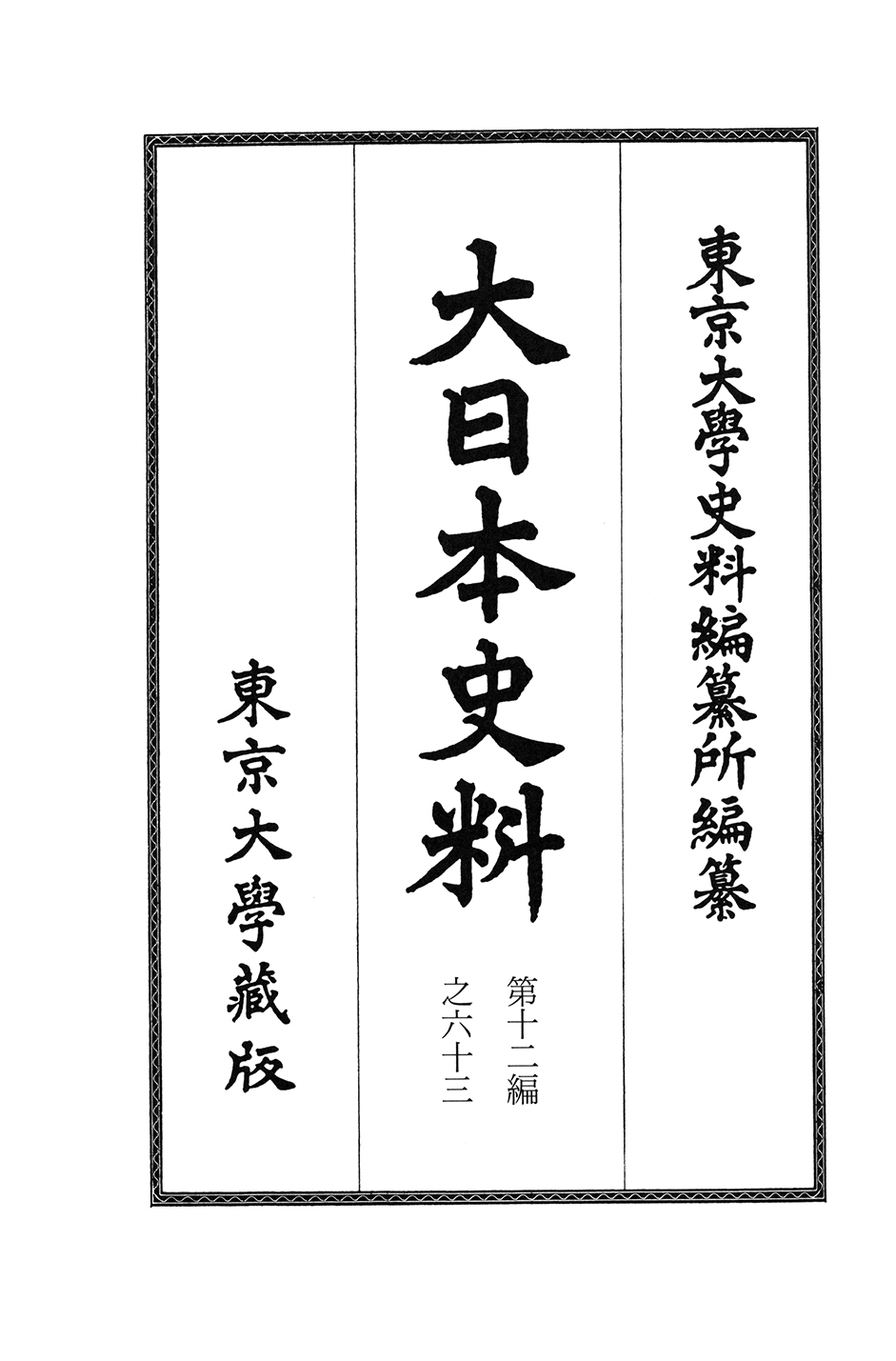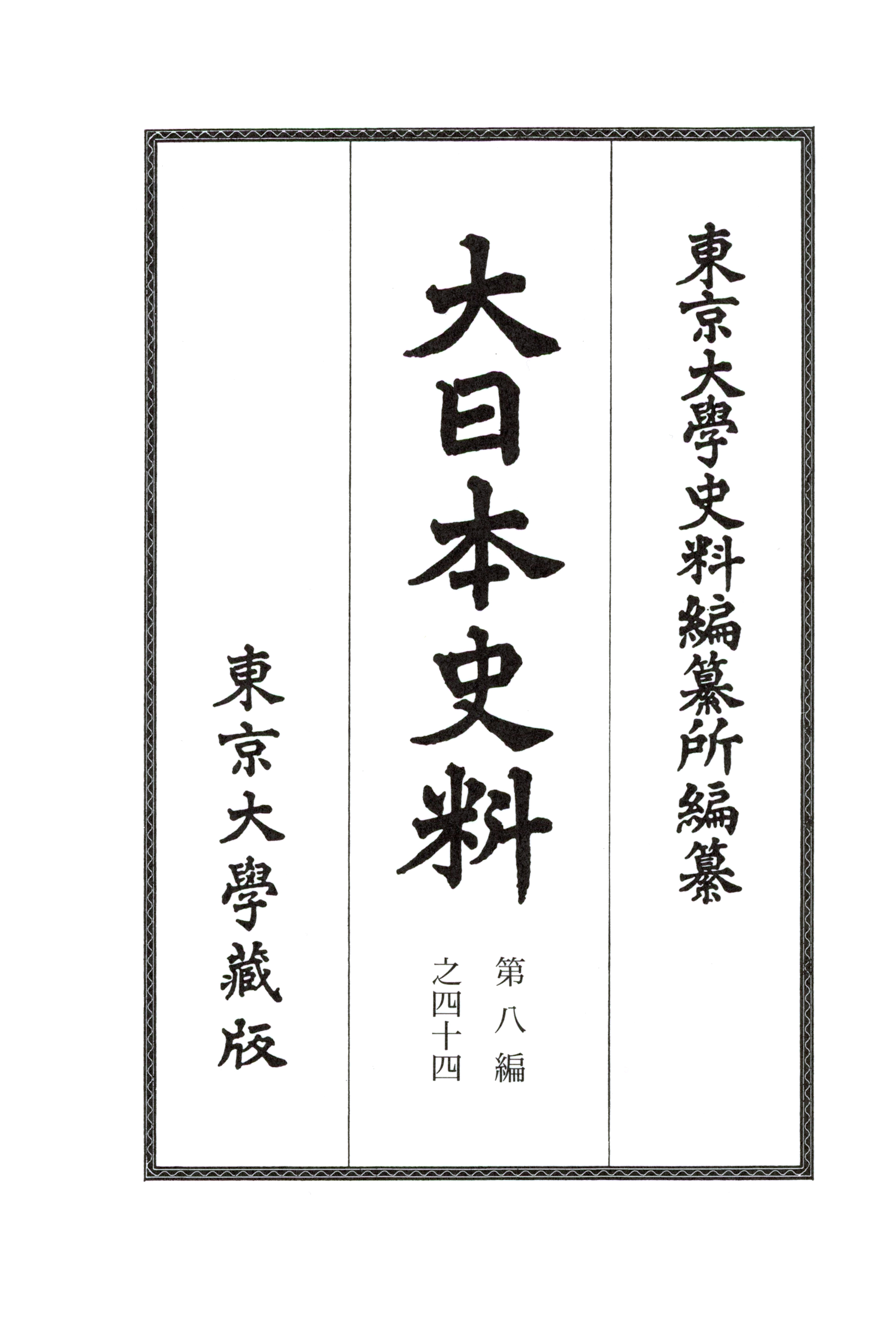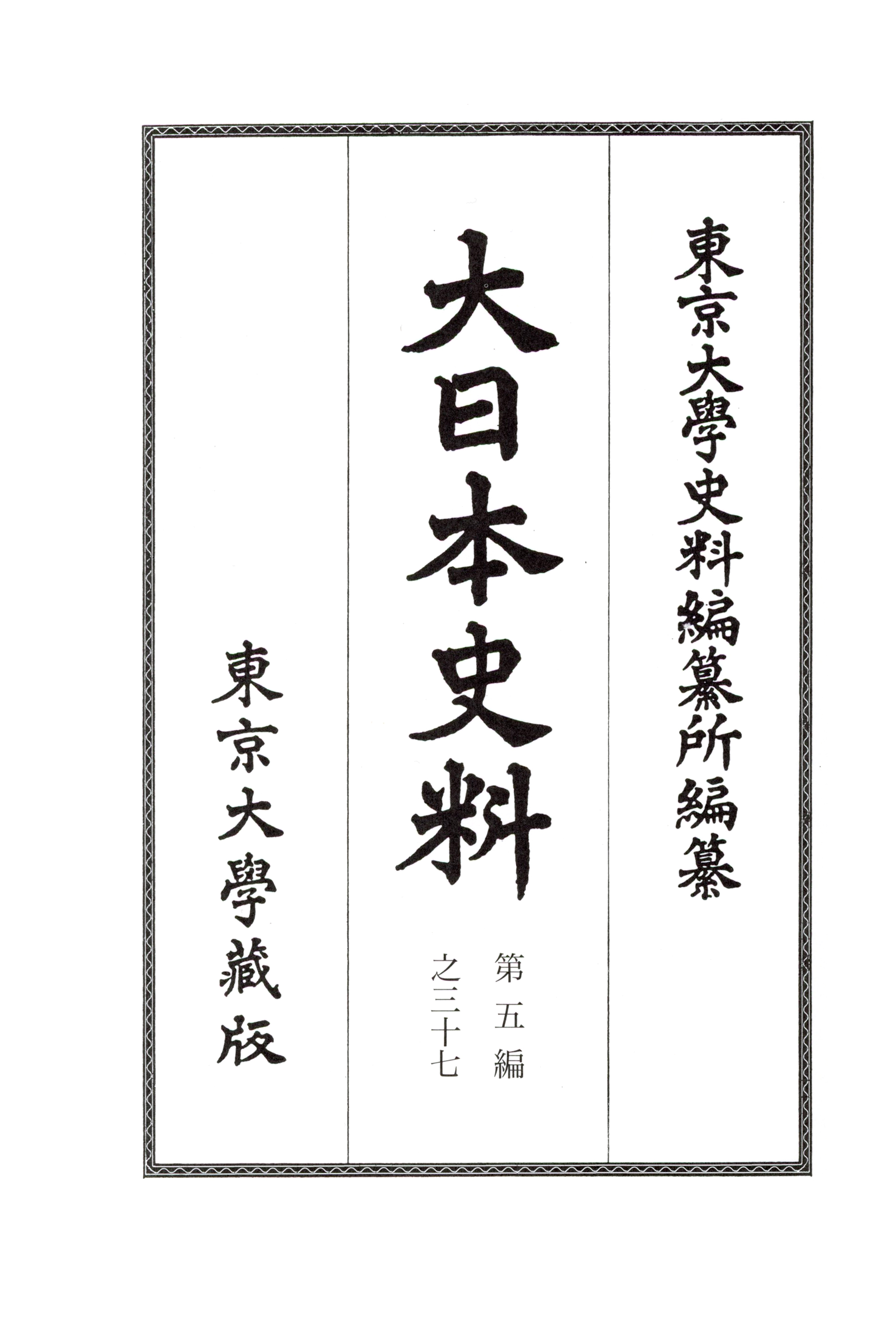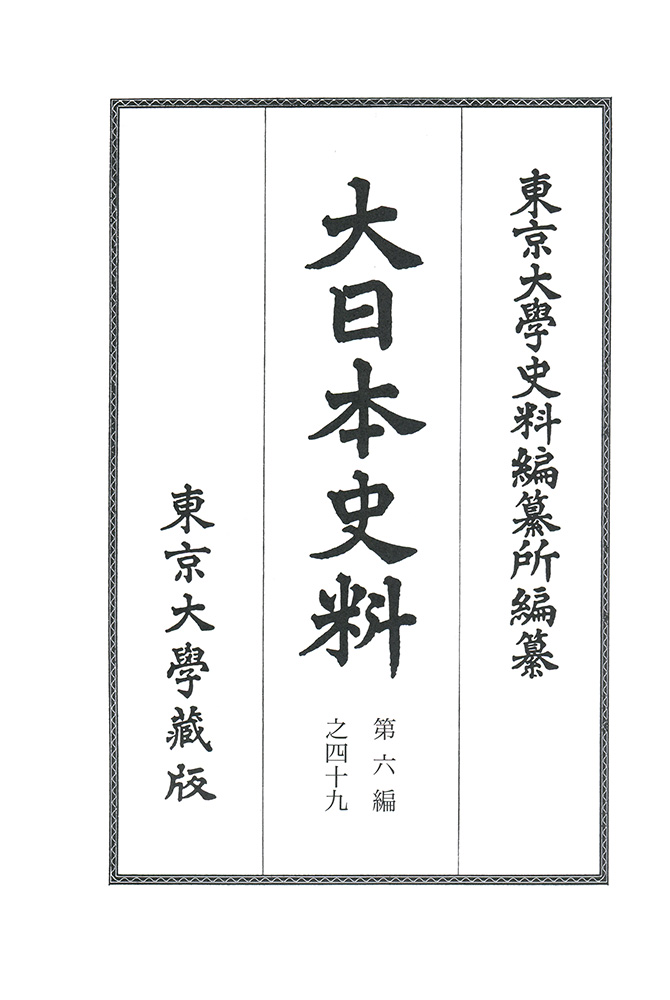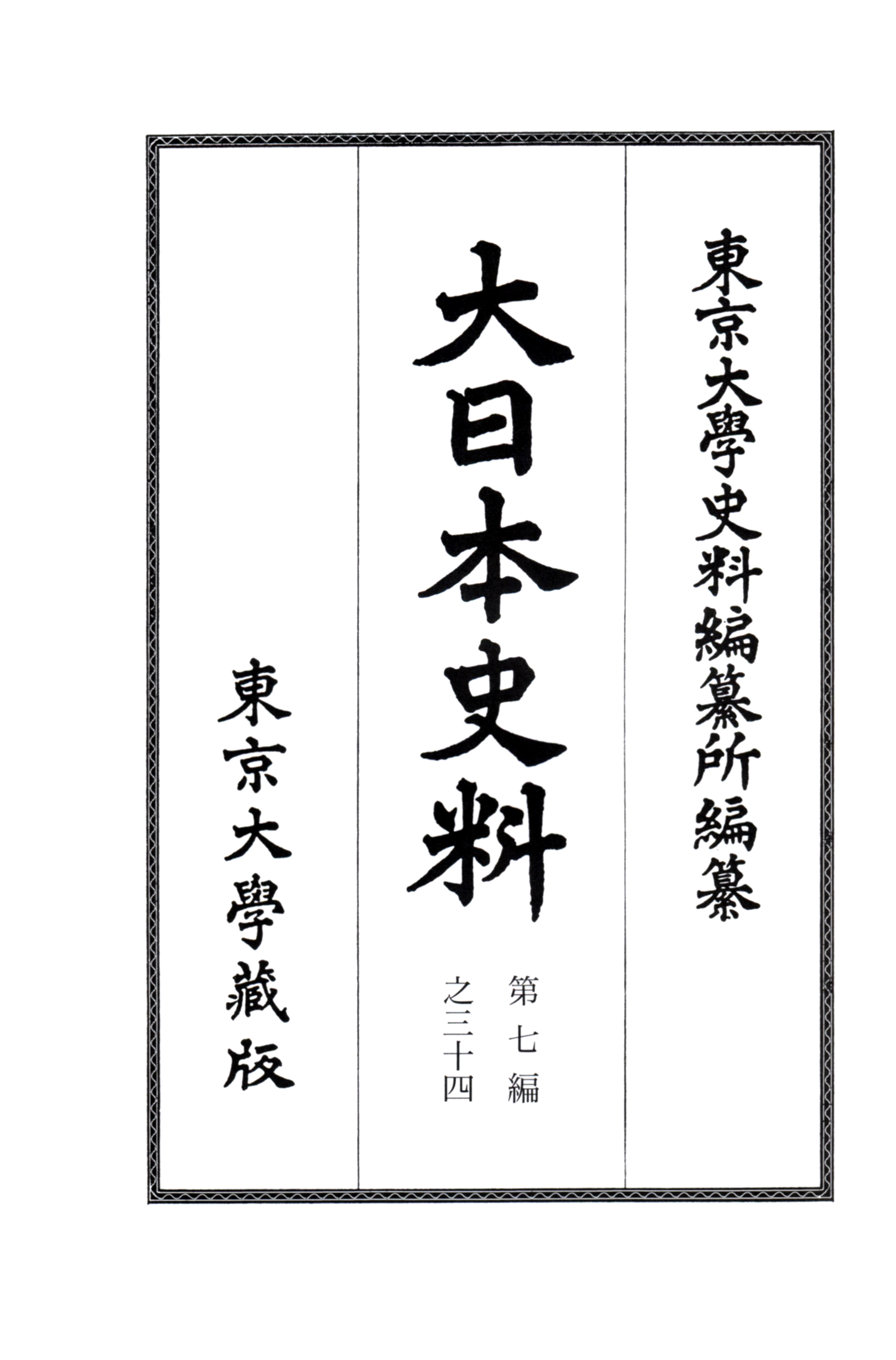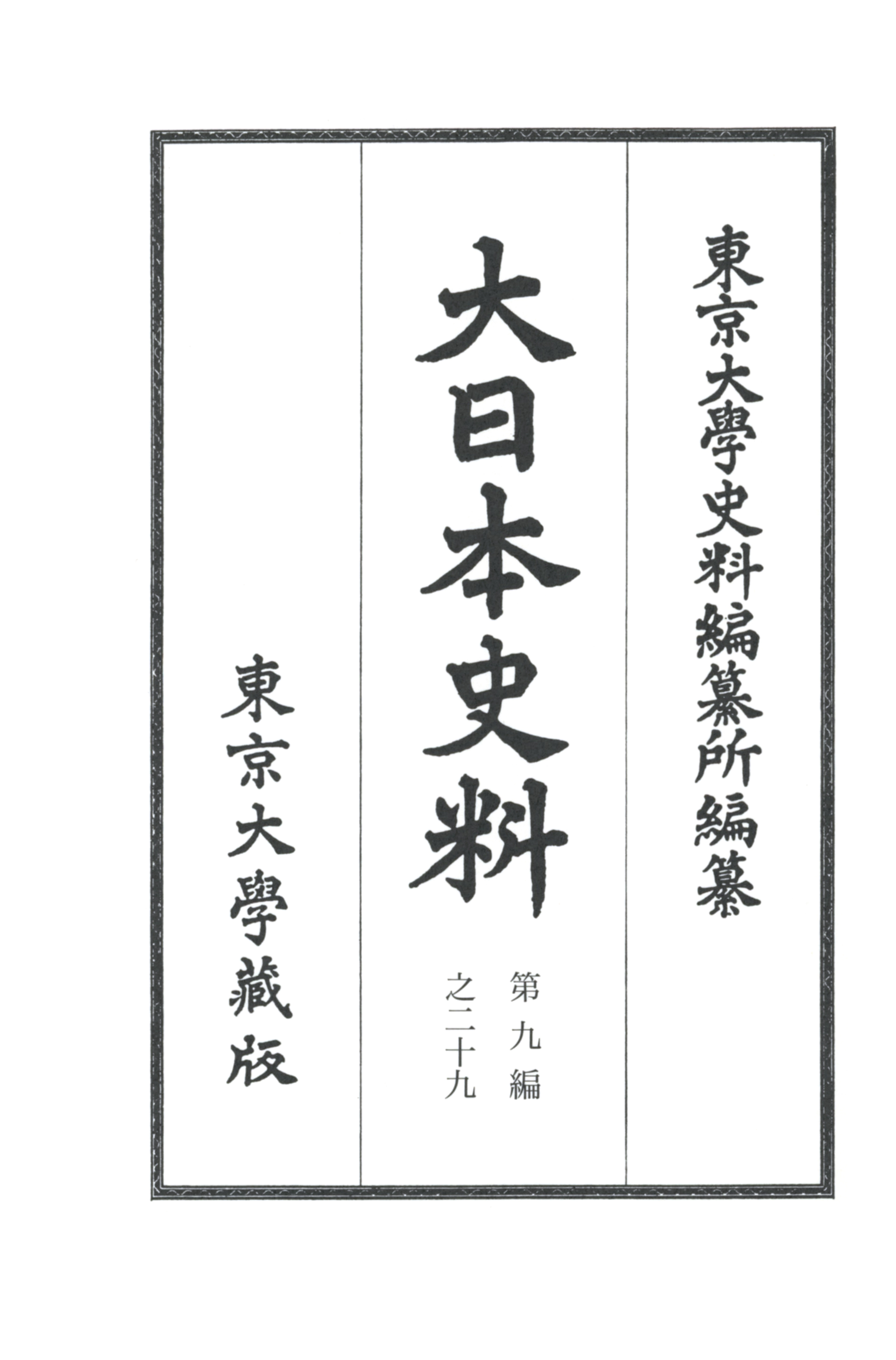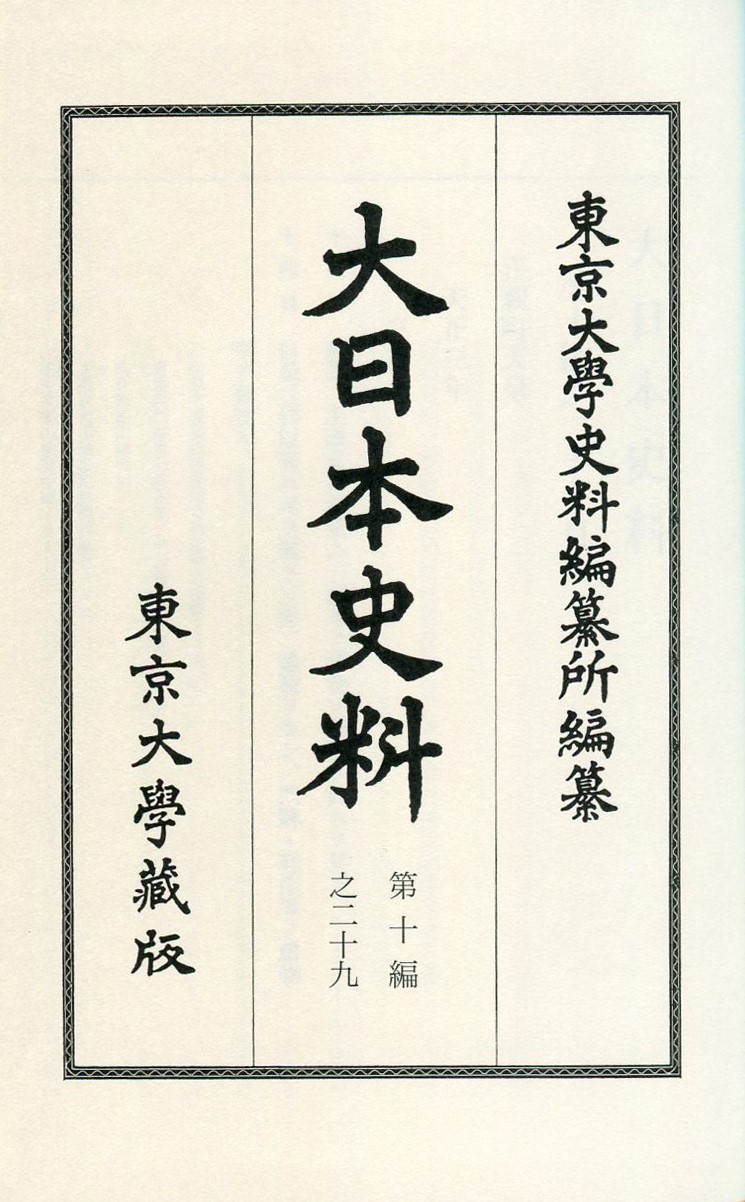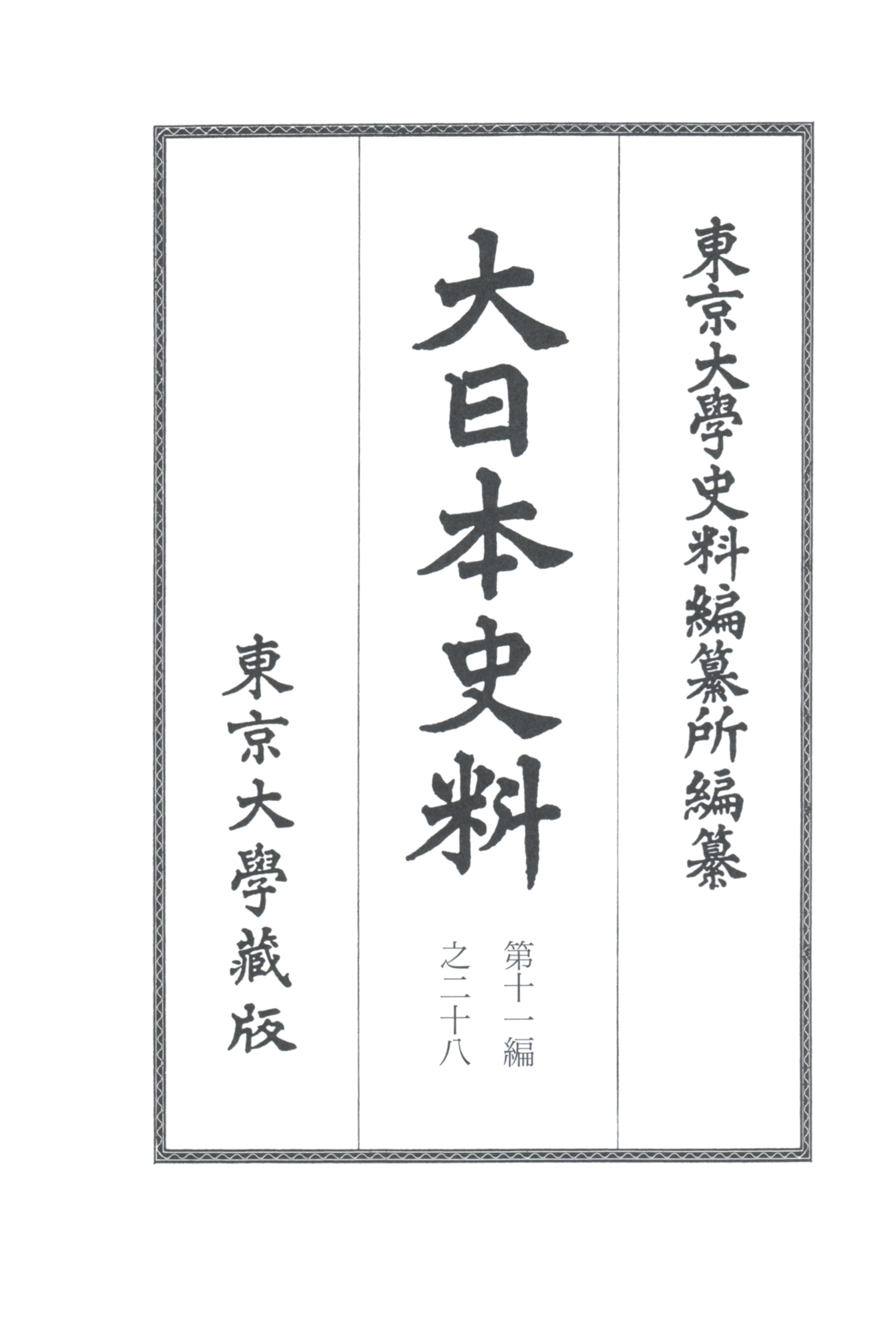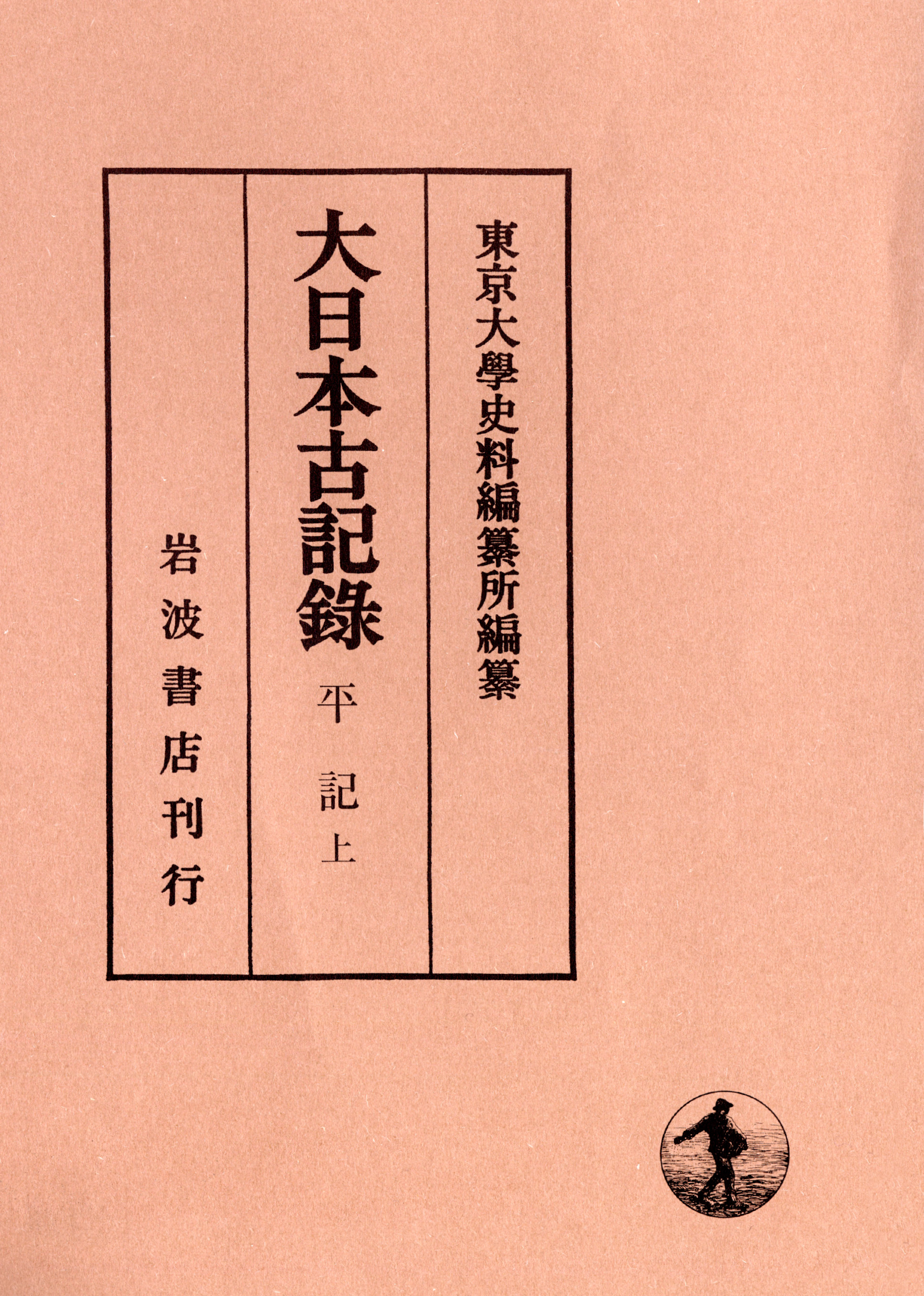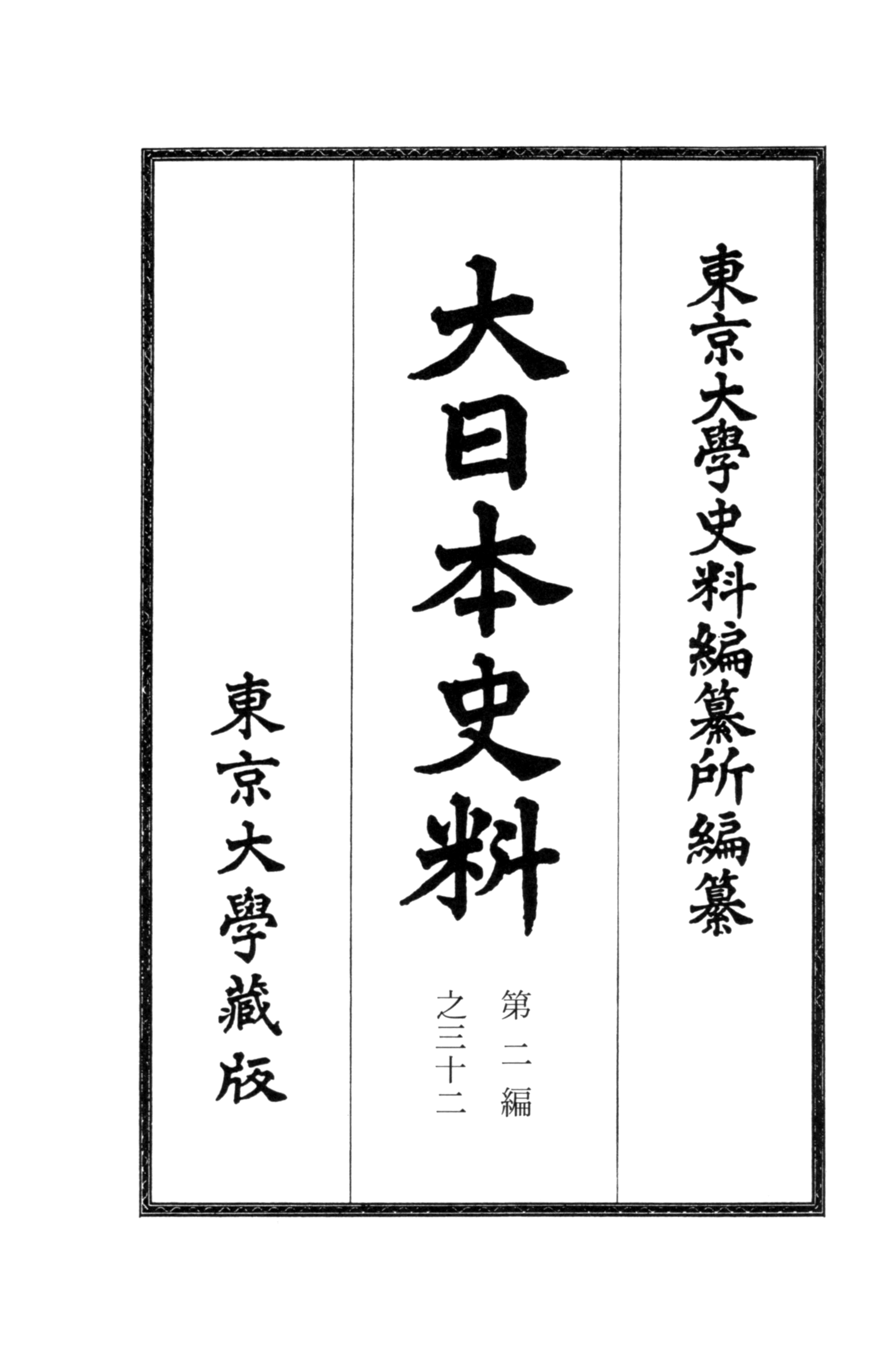
Title
Dai-Nihon Shiryo: Dai 2 no 32 (Chronological Source Books of Japanese History: Volume 2, Number 32)
Size
308 pages, A5 format
Language
Japanese
Released
November 25, 2019
ISBN
978-4-13-090082-9
Published by
University of Tokyo Press
Book Info
See Book Availability at Library
Japanese Page
Chronological Source Books of Japanese History is one of the collections of Japanese historical materials compiled and published by the University of Tokyo Historiographical Institute. Following on from the six national histories, starting with the Nihon shoki, this series covers the 980 years from 887 to 1867 in sixteen volumes. Currently, work has so far undertaken up to on each of volume 12 (the early Edo period).
In Chronological Source Books of Japanese History, various events are arranged in chronological order. Each event is summarized in a succinct outline, which is followed by a list of historical sources forming the basis of the outline. Therefore, when one wishes to investigate a particular historical event, one can read the relevant outline and peruse the list of related historical sources.
Volume 2 covers the so-called Regency period, from Emperor Ichijō’s accession to the throne in 986 to Emperor Shirakawa’s abdication in 1086. The present book contains events from the fourth month of Chōgen 5 (1032) to the end of the same year. The emperor at the time was Go-Ichijō, the son of one of Fujiwara no Michinaga’s daughters, and the regent was Michinaga’s eldest son, Fujiwara no Yorimichi.
The main historical sources for the period covered in volume 2 are the diaries of members of the nobility. Because it was considered important to perform not only regular court ceremonies but also the affairs of state in accordance with procedures and protocol that followed precedent, members of the nobility described in their diaries the affairs of state and court ceremonies and also recorded other events as memoranda for themselves and also in order to inform their descendants of precedents. Deciphering and analyzing these diaries while taking into account the author’s rank and aims and clarifying the management of state affairs and concrete details of events is one of the true joys of studying this period.
The events of 1032 are recorded in the Shōyūki, the diary of Fujiwara no Sanesuke, Minister of the Right, who was also known as the “Wise One,” and in the Sakeiki, the diary of the administrative official Minamoto no Tsuneyori. It is evident from these and other sources that in 1032 there was a serious drought, as a result of which large-scale religious services were performed constantly to pray for rain at the behest of the court in the imperial palace and at temples and shrines throughout the country. In addition, in the previous year there had been a report from the governor of Izumo province about the collapse of buildings at Kizuki Shrine (present-day Izumo Shrine) and a divine message from the shrine, so the emperor and court had taken the report seriously, however, it turned out that both the collapse of the shrine buildings and the divine message had been made up by the governor of Izumo. Further, in the twelfth month Mount Fuji erupted.
Chronological Source Books of Japanese History also includes sources related to literature, religion, art, and so on. The present book includes the Daihannyakyō jishō (covering 58 pages), a phonetic-semantic dictionary attributed to Fujiwara no Kintō (966–1041) and dated Chōgen 5. Phonetic-semantic dictionaries are works in which Sinitic words from a particular text are selected and their pronunciation, meaning, and also native Japanese reading are given, and they provide valuable material for linguistic research and the study of the Japanese language.
The Daihannyakyō jishō is a phonetic-semantic dictionary for the Daihannyakyō, the Chinese translation of the Mahāprajñāpāramitā-sūtra, and certain glyphs and words have been selected from the text and written in large characters, with the pronunciation written in small katakana to the right and the native Japanese reading likewise written in small katakana below. These features are considered important in the history of phonetic-semantic dictionaries.
In order to highlight these features, the font sizes and layout have been radically changed for this work so as to reproduce as best as possible its original format. I would encourage readers to take this book in their own hands and get a glimpse of the linguistic world of people of the Heian period.
(Written by BANSE Akemi, Associate Professor, Historiographical Institute / 2020)



 Find a book
Find a book



